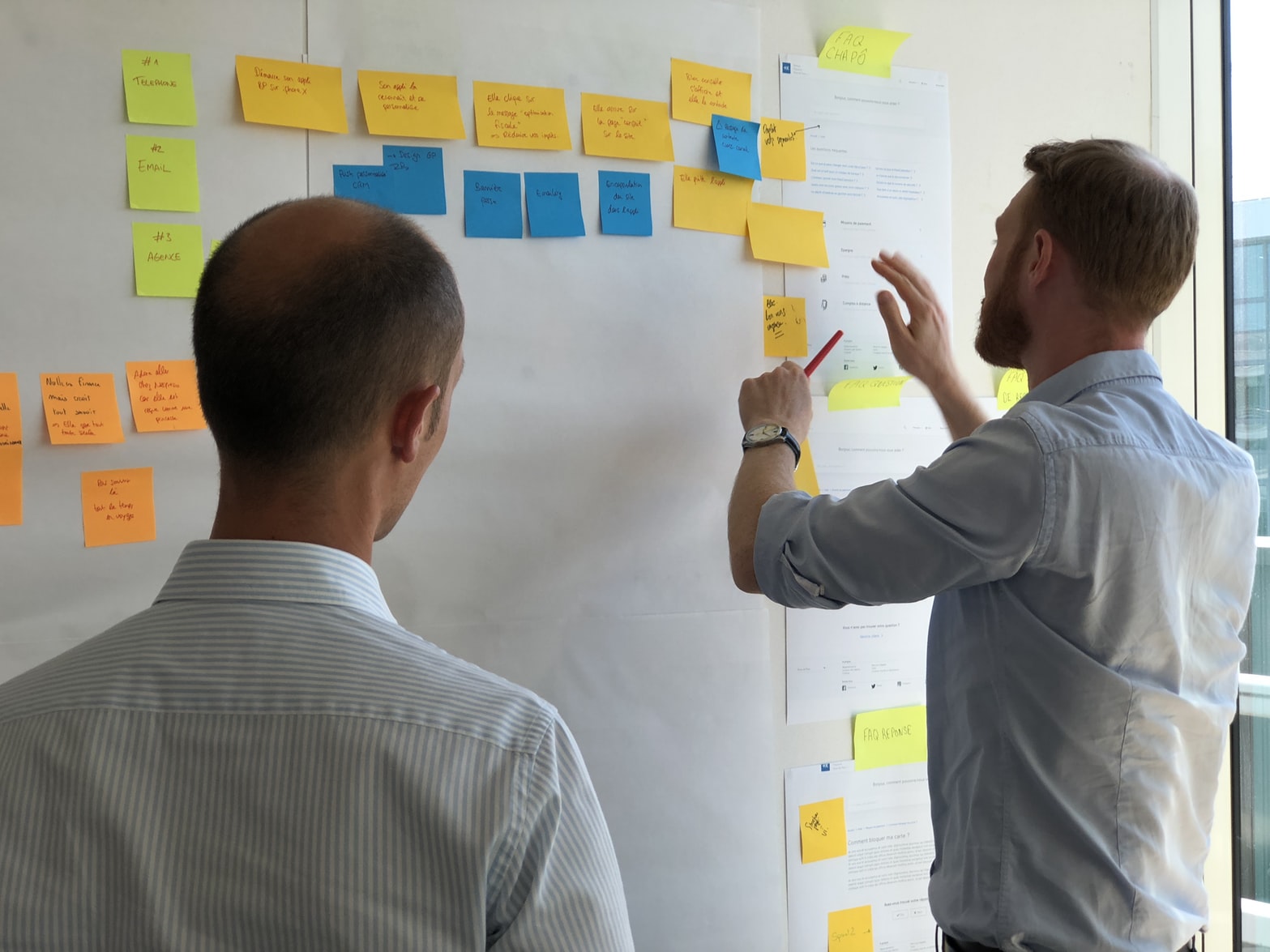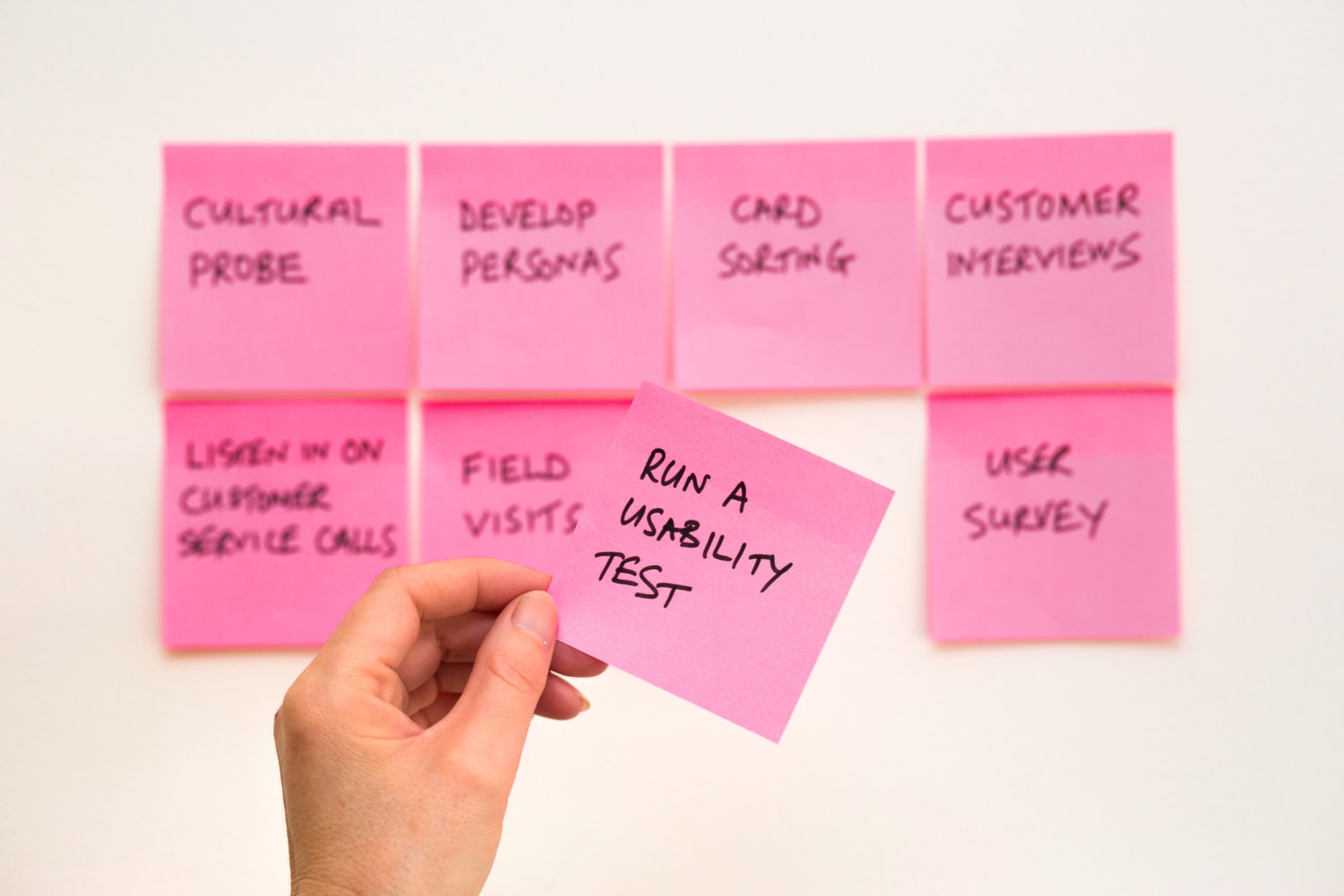4 Rooms of change
The 4 rooms model shows a change of topics throughout a period of time being in a good state and the person is happy about it (contentment). However there might be topics around the product/ team that people are aware that they are not going well, nevertheless, people deny that topic and move it aside. The topic is not addressed and spoken out loud (denial). Then there might be topics as well which are addressed and clear that they do not work well but there is no final solution yet that would solve that issue, so it is still in a state which is confusing and not clear how to approach it, how to solve it (confusion). And finally, there might be as well items/ topics in the cycle that were just solved with a nice outcome, the solution works well and people agree/ are proud of the new solution (renewal). Let team members silently write their ideas/ topics for all the quadrants onto sticky notes – 1 thought per note. Give them 5 min for the brainstorm. When time is over let everyone put up their stickies on the flipchart/ board one after the after. The person describes their topic in 1 or 2 sentences. Ask if any additional clarification is needed to understand a sticky. Cluster stickies that are about the same topic. Narrow down what is most interesting to discuss further. Vote on which action items to try by distributing dots with a marker, e.g. 3 dots each person to distribute for the topics of most interest. Continue with the Top 2 or 3 items into the next phase. Pick the first item and ask: “What can we do here to improve that?” The group is invited to discuss and share different ideas. The facilitator takes notes with 1 idea per sticky. If the discussion stops, you summarize all ideas and ask the group which of them they would like to take as a Retro action Item. Continue the same discussion and sharing of ideas with the other items. At the end, you have all Retro Action Items collected.
Template created by: Ekaterina - Has been used 522 times
4 Rooms of change Template
Contentment (satisfaction)
Renewal
Denial
Confusion
Create Free Board
See more templates like this!
- 0 uses
![Cover image for template: Papéis e Responsabilidades [Time de produto]](https://firebasestorage.googleapis.com/v0/b/funretro-pro.appspot.com/o/retrospective%2Fretro3.jpeg?alt=media&token=2c1839eb-79ff-4d5b-8b31-8e2f8f843587)
Papéis e Responsabilidades [Time de produto]
Definição e alinhamento do time sobre os papéis e responsabilidades de cada membro. - 0 uses

MoSCoW Technique
It's a prioritization technique, where we divide the features, outcomes, expected results, tasks or any type of work to be prioritised in 4 columns: Must Have, Should Have, Could Have or Won't have. ... - 0 uses

Problem, Root Cause, Solution
First everyone create cards explaining existing problems, then for each problem they fill the root cause and then fill any possible approach to prevent this problem occur again.
